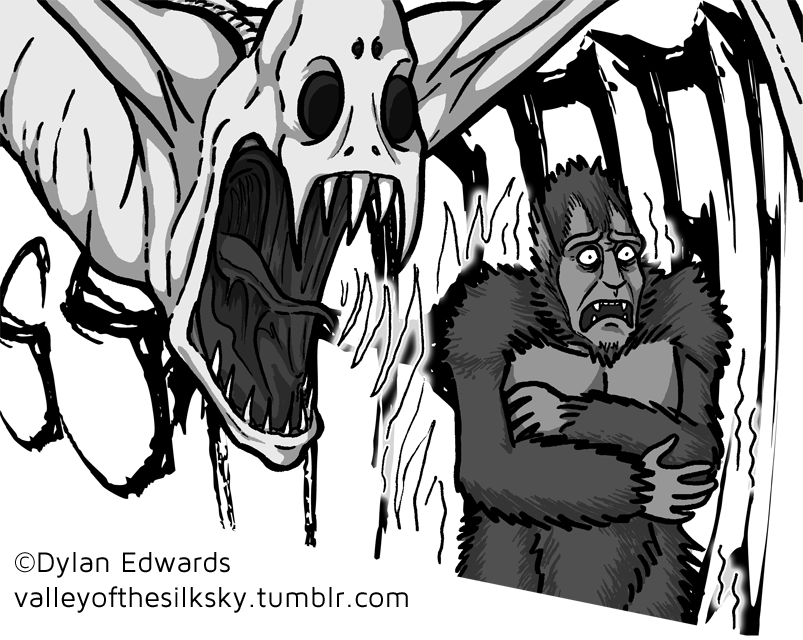 Shriekers are one of the largest predators in the Valley. They are typically found where forests meet open space, and typically prey on herd animals of various sorts.
Shriekers are one of the largest predators in the Valley. They are typically found where forests meet open space, and typically prey on herd animals of various sorts.
They are pack hunters whose main strategy involves sneakily encircling the herd they’re hunting. Shriekers at the rear let out a horrifically loud, piercing scream that either a) roots you in place in absolute terror, whereupon they grab you, or b) sends you fleeing in panic, directly towards the rest of the pack, who then grab you. All the shriekers close in around the prey to prevent escape. The shriekers at the rear can take care of any stragglers.
When their preferred prey migrates away during the winter months, shriekers go into hibernation. Like most hibernating animals, they will wake up periodically during the cycle, whether to engage in routine maintenance or because they’ve been disturbed by interlopers.
Ecology and Economy
Shriekers are keystone predators, making them essential for environmental balance in the Valley. Get rid of shriekers, and all of a sudden the herd animal population explodes, eats a bunch of plants that were keeping other plants in check, and the unchecked plants completely take over and kill off that one rare medicinal flower.
Since the Valley’s economy is so heavily dependent on materials gleaned from unique microclimates, the people want to avoid making any drastic changes to the ecosystem. As such, despite their fearsome nature, it is illegal to kill shriekers except in self-defense.
How Not to Get Eaten
“Why not just use repellents to avoid the shriekers?” you ask. Unfortunately, repellents don’t work especially well on shriekers. Since so much of their hunting strategy involves running prey into traps, individual shriekers may be too far out of range to ward off with a repellent. Because they move so quickly, they’ve already bitten you in half before they notice the unpleasant smell.
The best strategy is simply to move (quietly) during their hibernation season, or to monitor a pack and wait until they’re distracted by a hunt to sneak by.
If they decide to go after you, find some low, dense shrubbery to hide in, and then stay as still and as quiet as possible. You may have to sit there awhile, but eventually the shriekers will lose track of you and wander off.

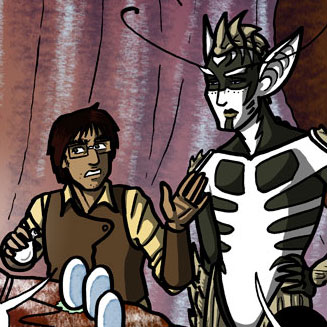
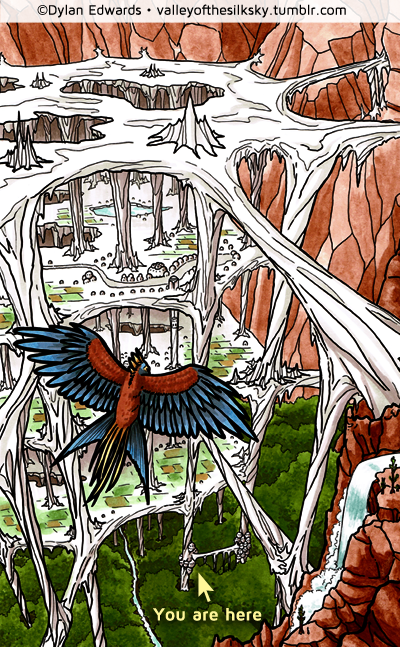 The web structure that spans almost the entire length and breadth of the valley is a country known as Pocalo.
The web structure that spans almost the entire length and breadth of the valley is a country known as Pocalo. 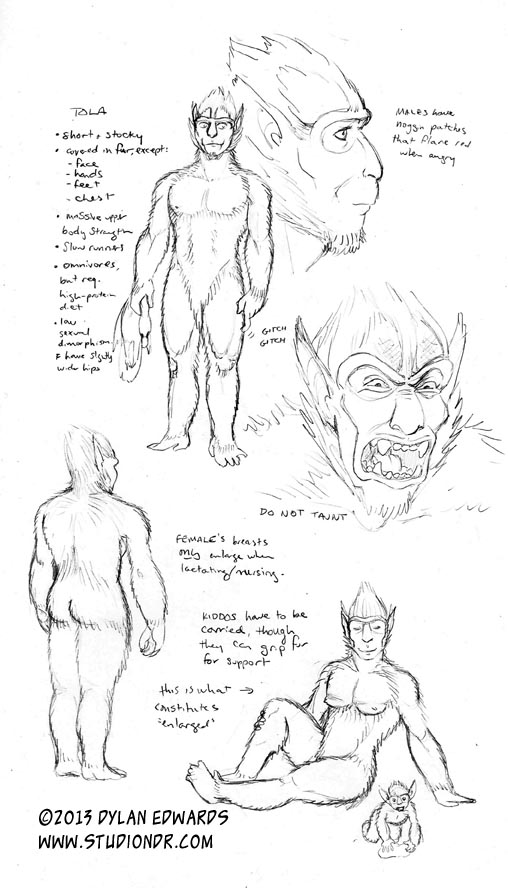 While there are several different types of Tolas, the ones who make their appearance in “Valley of the Silk Sky: Medicine; Run” are primarily Mountain Forest Tolas.
While there are several different types of Tolas, the ones who make their appearance in “Valley of the Silk Sky: Medicine; Run” are primarily Mountain Forest Tolas.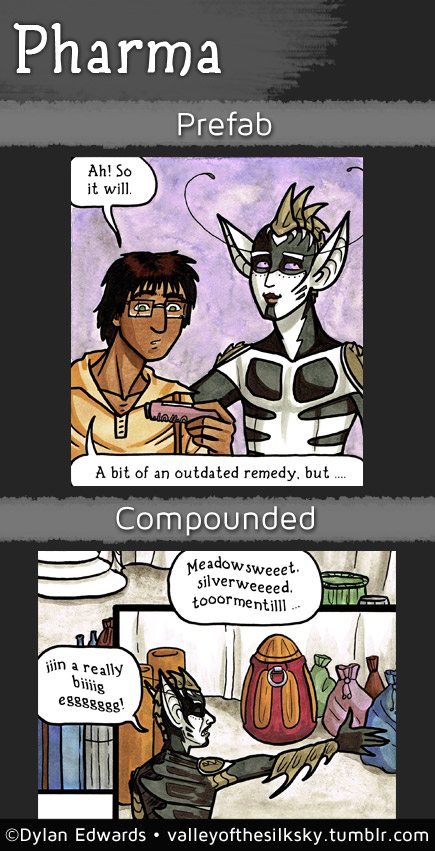 As discussed in the article on
As discussed in the article on 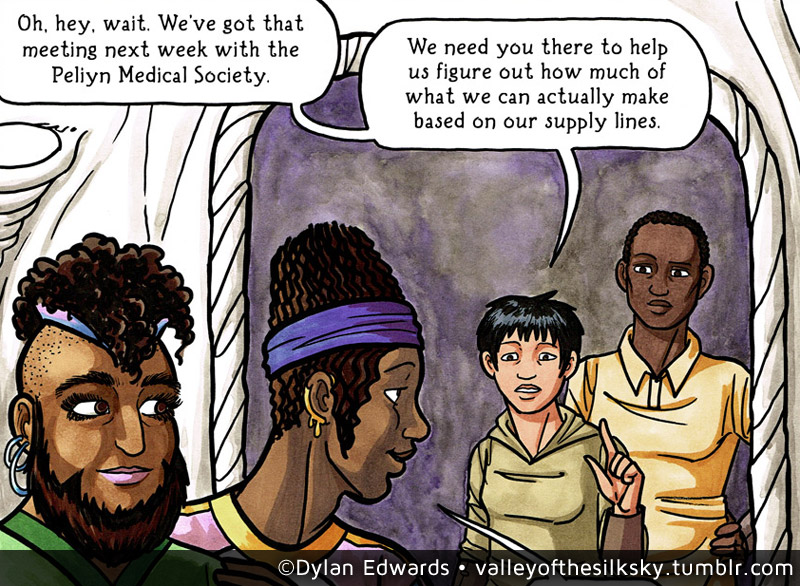 Pocali culture doesn’t assign any specific societal roles or presentations or clothing to you based on whatever body parts you happen to have been born with, or whatever body parts you happen to have right at this moment. People dress how they want, perform the work that best suits them, and adopt whatever mannerisms feel comfortable to them.
Pocali culture doesn’t assign any specific societal roles or presentations or clothing to you based on whatever body parts you happen to have been born with, or whatever body parts you happen to have right at this moment. People dress how they want, perform the work that best suits them, and adopt whatever mannerisms feel comfortable to them. Shriekers are one of the largest predators in the Valley. They are typically found where forests meet open space, and typically prey on herd animals of various sorts.
Shriekers are one of the largest predators in the Valley. They are typically found where forests meet open space, and typically prey on herd animals of various sorts.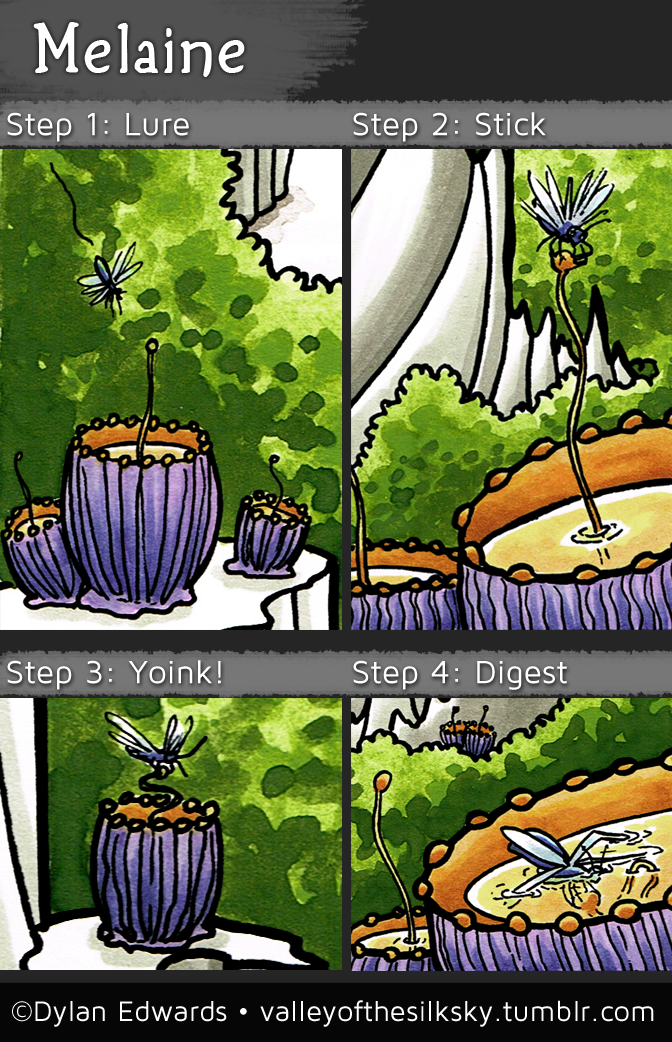
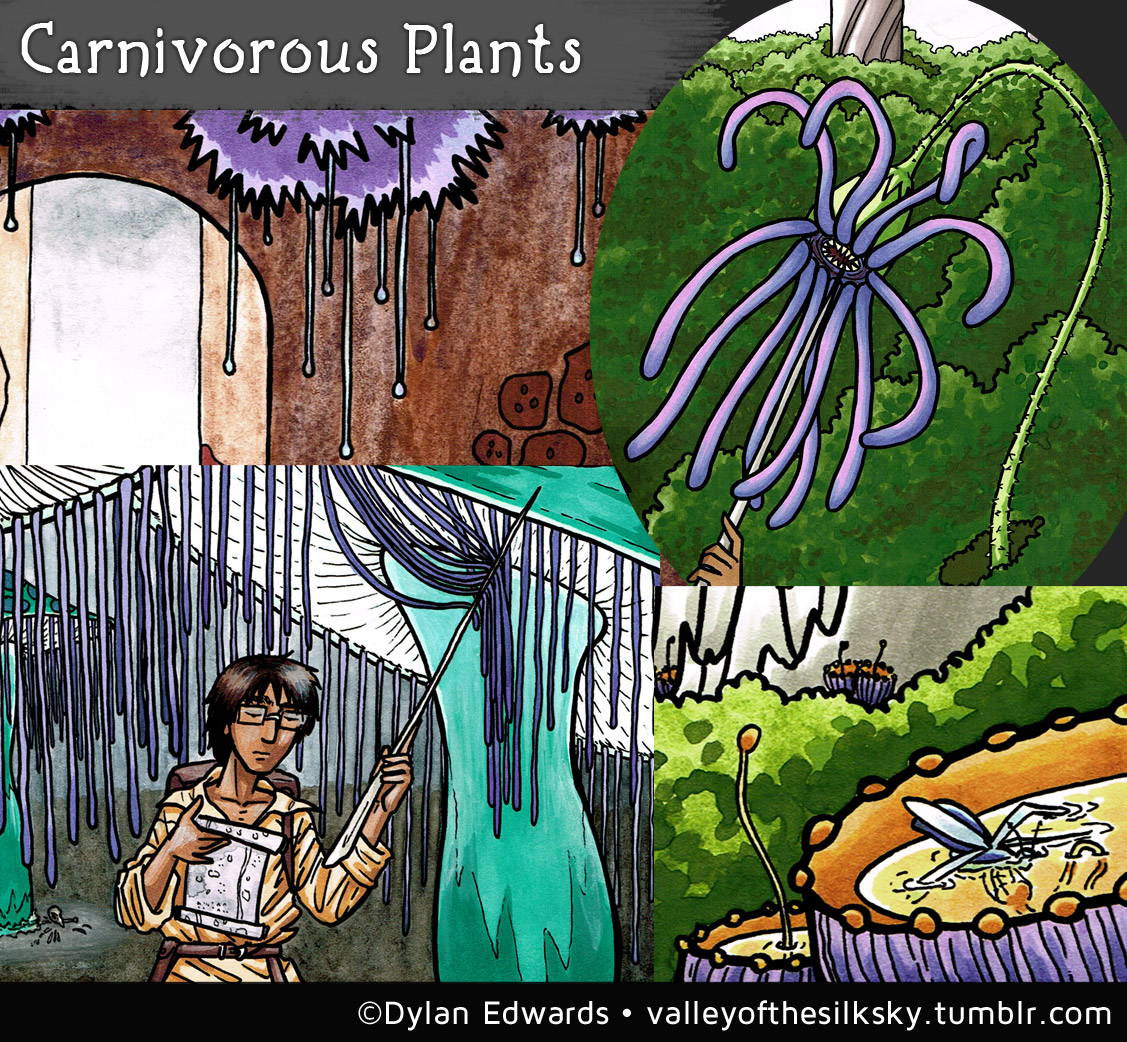
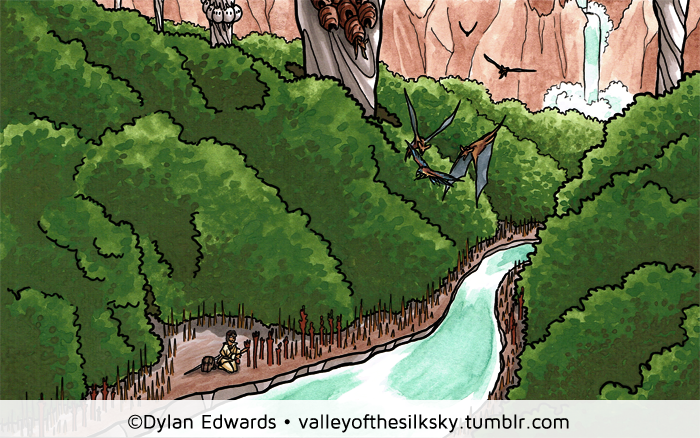
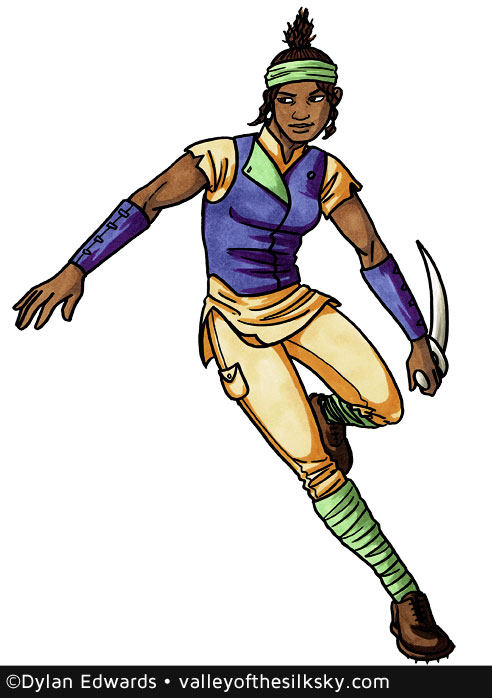 The unusual geography of the Valley makes it a host to countless microclimates, which in turn means there’s a whole bunch of rare flora, many of which may only be found in one small area.
The unusual geography of the Valley makes it a host to countless microclimates, which in turn means there’s a whole bunch of rare flora, many of which may only be found in one small area.